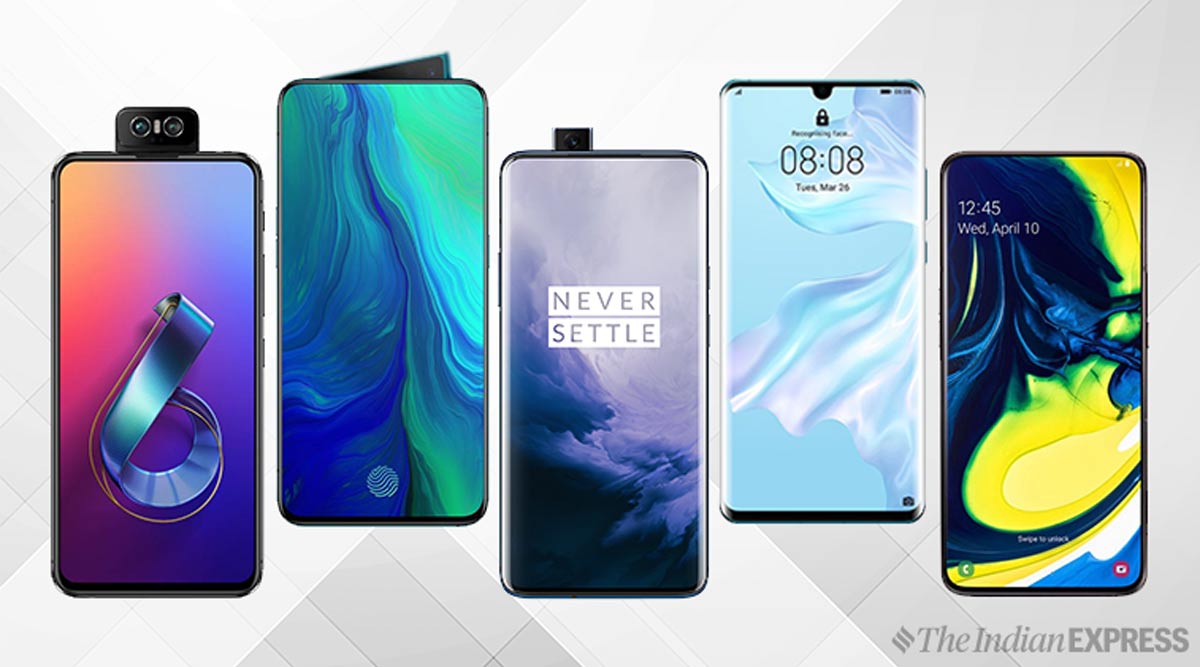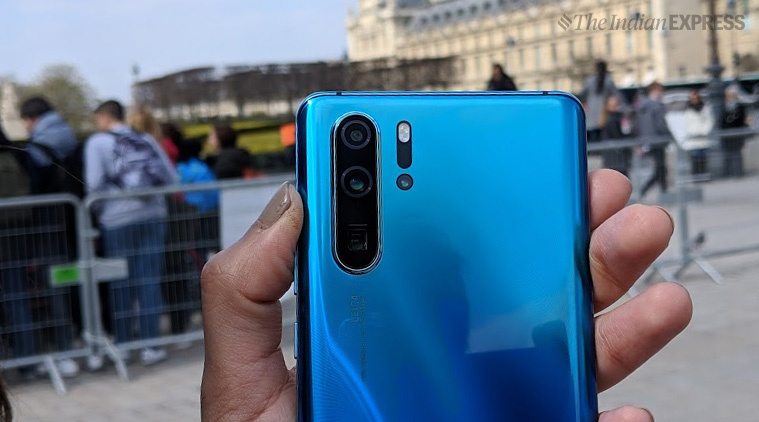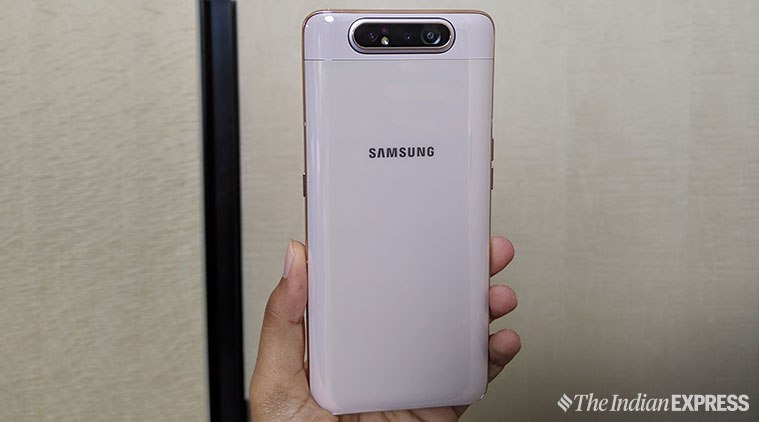Five mobiles with unique cameras: Asus 6Z, Oppo Reno, Samsung Galaxy A80 and more
These are the five smartphones who carry the most interesting cameras. The list includes Asus 6Z, Oppo Reno 10x Zoom, OnePlus 7 Pro, Huawei P30 Pro, and the Samsung Galaxy A80.
 Most interesting camera smartphone: Asus 6Z | Oppo Reno 10x Zoom | OnePlus 7 Pro | Huawei P30 Pro | Samsung Galaxy A80
Most interesting camera smartphone: Asus 6Z | Oppo Reno 10x Zoom | OnePlus 7 Pro | Huawei P30 Pro | Samsung Galaxy A80
Over the past couple of years, smartphone cameras have evolved at an impressive pace that shows no signs of slowing down for the moment. Smartphone manufacturers are coming up with some unique camera solutions for their flagship devices, but the trend is not limited to the primary camera.
Manufacturers are also trying to achieve the true full-screen display so they are moving around the front camera to get the desired result. Some are using dot-notch or punch-holes to place the front camera whereas others have relied on motorised mechanisms to hide it. We are listing five smartphones which carry a unique camera setup either on the back or at the front.
Asus 6Z: Price starts at Rs 31,999
Asus 6Z (Zenfone 6) is the latest flagship offering from Asus which carry a one of its kind flip camera setup. The Asus 6Z does not require different rear and front cameras as the motorised flip camera mechanism rotates the rear camera by 180 degrees to make it act as the front camera.
 Asus 6Z: You can control the placement of the motorized camera to capture any angle up to 180 degrees.
Asus 6Z: You can control the placement of the motorized camera to capture any angle up to 180 degrees.
Not only this, users can control the angle of the flip to use it whatever the way they want. For instance, one can keep the flip camera at 90 degrees to capture the scene in front, while keeping the phone screen facing upward.
The camera setup on Asus 6Z (review) carries a 48MP (f/1.79) primary sensor clubbed with a 13MP ultra wide sensor. Asus 6Z features 6.4-inch FHD+ full-screen display, Qualcomm Snapdragon 855 processor, 5000mAh battery, Android 9 Pie with Zen UI 6.
Oppo Reno 10x Zoom: Price starts at Rs 39,990
While every other smartphone was going forward with a straight popup selfie camera to achieve the full-screen display without notch or hole, Oppo Reno employed a shark-fin-shaped popup mechanism. The phone features a 16MP selfie camera. The rear camera is also unique as the triple camera setup not only carries high pixel count sensors, but has a periscope-style telescopic camera sensor to provide 10x lossless zoom.
 The shark-fin-shapead popup camera is quite interesting on this phone.
The shark-fin-shapead popup camera is quite interesting on this phone.
The rear camera specifications are 48MP (f/1.7) + 8MP (f/2.2) + 13MP. Other specifications of the Oppo Reno 10x Zoom (review) include a 6.6-inch OLED display, Qualcomm Snapdragon 855 processor, 4065mAh battery, and Android 9 Pie operating system.
OnePlus 7 Pro: Price starts at Rs 48,999
OnePlus employed a popup selfie camera and a triple rear camera setup for its 2019 flagship device OnePlus 7 Pro. The smartphone features a full-screen display without any notch or hole with the 16 MP (f/2.0) selfie camera hidden inside a motorised popup mechanism.
The triple camera setup on OnePlus 7 Pro (review) is able to provide 3x zoom. The rear camera setup on the device is a 48MP (f/1.6) + 8MP (f/2.4) telephoto sensor + 16MP (f/2.2) ultrawide sensor combination.
 The OnePlus 7 Pro design is different from previous OnePlus because of the curved edges.
The OnePlus 7 Pro design is different from previous OnePlus because of the curved edges.
Other specifications of the device include a 6.67-inch QHD+ 90Hz display, Qualcomm Snapdragon 855 processor, 4000mAh battery, and OxygenOS based on Android 9 Pie.
Huawei P30 Pro: Price starts at 67,990
Huawei P30 Pro does not feature a fancy popup mechanism, but the rear camera setup makes the phone extraordinary to product some excellent results. The phone comes with a quad rear camera setup powered by a 40MP sensor clubbed with a 20MP wide-angle lens and an 8MP periscope style lens for 5x optical zoom. There is also a small ToF (time of flight) sensor to improve the bokeh effect. The front facing camera of the device is a 32MP sensor.
 The P30 Pro’s quad-camera system has been made with German optics company Leica.
The P30 Pro’s quad-camera system has been made with German optics company Leica.
Other specifications of the Huawei P30 Pro(review) include a 6.47-inch FHD+ OLED display, Kirin 980 processor, IP68 rating, Qi wireless charging, reverse charging, 4200mAh battery with 40W fast charging.
Samsung Galaxy A80: Not yet in India, price will be around Rs 50,000
Samsung Galaxy A80 combines the rotating camera with a slider mechanism. The rear camera setup slides upwards and then rotates to work as the front camera. So, this phone does not need two separate cameras for the back and front. The Galaxy A80 features a triple camera setup of 48MP (f/2.0) + 8MP (f/2.2) ultra-wide sensor + 3D depth sensor.
 Samsung Galaxy A80 sports a 3D glass back design with metal frames.
Samsung Galaxy A80 sports a 3D glass back design with metal frames.
Other specifications of the Galaxy A80 include a 6.7-inch FHD+ Super AMOLED display, 3700mAh battery, and a new Snapdragon 730G processor.







